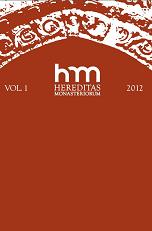Wokół społeczno-prawnych uwarunkowań i jerozolimskich asocjacji kościoła opackiego w Henrykowie
Around the social and legal conditions and Jerusalemite associations of abbatial church in Henryków
Author(s): Bogusław CzechowiczSubject(s): Fine Arts / Performing Arts
Published by: Laboratoire de Recherches sur l'Histoire des Congregations et Ordres Religieux (LARHCOR)
Keywords: Cistercians; Henryków; Silesia; architecture; social and legal conditions of abbatial church; symbolism of the church tower; post-Trent epoch; eschatology; epigraphy; topography of Jerusalem
Summary/Abstract: The most unusual architectural feature of the Cistercian abbey in Henryków is the asymmetrically situated tower from 1608. It was erected by the foundation of abbot Nicolaus Hibner, placing the whole figure epitaph of the founder on it. The inscriptions included comment on the sense of the creation through the fragmenst of travesty of Psalm 26 and Proverbs of Solomon. In the light of above, the tower can be interpreted in the eschatological context associated with the memory of the abbot-founder, but also in the socio-political structure of the Duchy of Münsterberg (Duchy of Ziębice). The rank of the convent was based on the grants, privileges and their confirmations achieved through the centuries; inevitably, it was anchored in the near or distant past. Built in after Trident era, Gothic in its expression, the tower – the eternal symbol of power and security – stands as a monumental artistic parallel of those anchored in the medieval past grants. The comparison with the drawings from 1486 indicates that the facade of the abbatial church, enriched with a tower and domed vestibule from 18th century, could have been formed over many decades in reference to the temple concealing the tomb of Lord. The literary (historiographical) legacy provides several examples of identifying of Cistercians, also those from Henryków, with the Chosen People. The references to the Jerusalemite topography can be found on the epitaphs of two 16th century Cistercians from Henryków. Concerning the church in Henryków as such, there are not as legible, however, there must be drawn a question about the shape of medieval chapel of st. James, situated on the axis of the temple, which from 1760–1762 was replaced with elliptical chapel of st. Mary Magdalene, in which the medieval tomb of abbey benefactors was placed – The Duke Bolko and his wife Judith (Jutta).
Journal: Hereditas Monasteriorum
- Issue Year: 2012
- Issue No: 1
- Page Range: 73-84
- Page Count: 12
- Language: Polish

